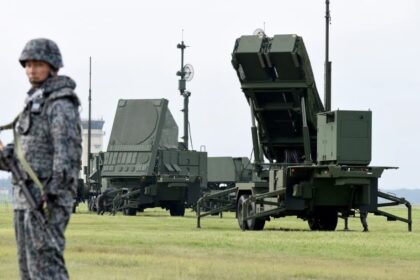Similar coins, very different value
Across Japan, small shops are finding Korean 500 won coins in their tills after sales that should have been paid with 500 yen coins. The two coins look and feel similar at a glance, yet the values are very far apart. A 500 yen coin is worth roughly 3.40 dollars, while a 500 won coin converts to about 53 yen, around 0.36 dollars. For a cashier working quickly during a rush, that difference can slip by, leaving the business to absorb a loss every time it happens.
Restaurant owners, gas station attendants, convenience store workers and public bath operators have all reported recent cases. Some appear to be honest mistakes. Others look intentional, with customers abusing the similarity to pocket the difference. Reports also show that offenders are not limited to foreign visitors. Japanese customers have been identified in several cases, which has eased concerns among many shopkeepers who do not want to unfairly blame travelers from Korea.
The recurring mix-up has practical and legal consequences. In person, knowingly presenting a 500 won coin as if it were a 500 yen coin can be treated as fraud under Japanese law. Using the coin in a machine, such as a vending machine or parking meter, can be treated as theft. The acts may look simple, but they can lead to arrest and prosecution.
How two coins ended up so easy to mix up
Japan introduced the 500 yen coin in 1982 to replace a banknote of the same value. By coincidence, South Korea’s 500 won coin, also widely used in daily life, has the same diameter at 26.5 millimeters. The old Japanese 500 yen coin weighs 7.0 grams. The Korean 500 won coin weighs about 7.7 grams. The latest 500 yen coin issued in 2021 weighs 7.1 grams. For a busy cashier or an older worker with weaker eyesight, these small differences are hard to catch at the counter.
Both coins were once made with cupronickel, a match that helped drive a wave of abuse in the 1990s. Criminals modified 500 won coins, shaving or drilling them to bring the weight closer to the old 500 yen coin. They then used those altered coins in vending machines. Some pressed the return lever to retrieve genuine 500 yen coins. Others made small purchases and kept the change. Police seized about 14,000 500 won coins in 1997 tied to that wave of machine fraud. The episode forced operators to recalibrate machines and prompted the government to make design changes.
Japan redesigned the 500 yen coin in 2000 to resist machine tampering. In 2021, the Ministry of Finance went further, introducing a bicolor clad coin and a set of new security features aimed at defeating counterfeiters and confusing lookalikes. Machine fraud has dropped with these changes. Yet the human factor remains. Many cash transactions still depend on a quick glance and a split-second decision by a person, which is where honest mistakes and opportunistic deception still occur.
Front line stories from shops
At a small udon restaurant in Tokyo’s Shinjuku district, owner Takashi Ito said the rush of lunch service often makes careful coin checks impossible. He recounted years of losses, discovered only later when balancing the till at the end of the day. Ito described how fast cash handling leaves little time to inspect edges or lettering, and how his eyesight makes recognition even harder.
Takashi Ito, a 69-year-old udon shop owner in Tokyo: “The sizes and weights of the two coins are almost the same, so it is hard to identify them. I have suffered similar losses about 15 times over the past 10 years.”
In Fukushima Prefecture, a ramen shop owner said he traced one incident back to a Japanese customer, not a tourist. He suspected the customer had done it before, and he called the loss a shock at a time when ingredient prices keep rising.
A ramen shop owner in Fukushima Prefecture: “When I checked who paid with the 500 won coin, it turned out to be a Japanese person, not a Korean. The customer looked like a repeat offender.”
Similar cases have been reported at gas stations and public baths, settings where cash payments are common and staff juggle multiple tasks. Coins often go into a tray, the customer leaves, and the cashier moves on to the next order. By the time the wrong coin is discovered, the buyer is long gone.
Mistake or plan
Some mix-ups happen without bad intent. A customer may receive a 500 won coin as change somewhere, not notice the difference, and pass it along later. Tourists can get confused at crowded attractions. Elderly customers sometimes mistake the coins in dimly lit shops. In other cases, cashiers suspect intent, like when the same customer reappears or when several suspect coins come in close together during a busy period.
The financial hit adds up quickly. On a 500 yen sale, a 500 won coin means a shortfall of around 450 yen. For a bowl of ramen or a tank of gas priced with tight margins, a few such incidents can wipe out a day’s profit on those items. Shopkeepers say the coins often sit mixed in with genuine yen until the evening count, which means they cannot confront the customer later. Returning the coin to a bank is not an option. Banks do not exchange won for yen over the counter in a standard coin deposit.
Shops that try to minimize risk often rely on simple habits. Some set aside all 500 yen pieces in a separate cup and give them a second look before the drawer closes. Others add a small desk lamp or magnifier near the register to help older staff. A few keep a genuine 500 won coin taped near the till as a visual reference.
How Japanese law treats the scheme
Japan’s criminal law draws a line between what happens in person and what happens with machines. If a person knowingly hands a 500 won coin to a cashier as if it were 500 yen, police can pursue a fraud case. If someone uses a 500 won coin in a vending machine, laundromat, or other automated device with the goal of getting value back, police can treat that as theft from the operator of the machine.
Both charges can carry serious penalties. Repeat behavior makes prosecution more likely, and evidence such as surveillance video, a string of incidents, or recovered coins can support a case. If a customer genuinely made a mistake, most shops report that a clear explanation and a corrected payment resolves the matter on the spot. When intent seems clear, shop owners are encouraged to retain the coin, record the time and details, and contact police.
What the 2021 500 yen coin changed
The latest 500 yen coin, issued in 2021 by the Ministry of Finance, was built to defeat both counterfeiting and machine abuse. It weighs 7.1 grams and keeps the 26.5 millimeter diameter. The coin uses a bicolor clad structure with three layers of metal, making it difficult to copy at scale. The edge has helical ridges with two different pitches, a world first for a mass produced coin. Micro lettering appears on the inner rim. The large zeros in the “500” include latent images that shift between “JAPAN” and “500YEN” when viewed from different angles. An overview of the features is published by the Ministry of Finance and the Bank of Japan after coordination with cash handling equipment makers here.
Current and older 500 yen coins remain legal tender. That decision helps keep cash flowing smoothly, especially in rural areas and among older residents who rely on coins. It also means many designs circulate at once. Money handling equipment across Japan needed software and hardware updates to accept the 2021 coin. That roll out took time. Complaints about machines that temporarily failed to accept the new coin were common during the first phase. Acceptance has improved as operators complete updates. Even with tougher security and better machines, shop counters still depend on human checks, which is where the lookalike problem persists.
Practical steps for shops and travelers
There is no perfect fix, yet a few low cost habits reduce risk without slowing service.
- Keep a reference coin: tape a genuine 500 won coin near the register so staff can compare the size, color tone, and font of the numerals.
- Use light and separation: place a small lamp near the till and sort 500 yen coins into a separate dish during rushes, then take a quick second look between waves of customers.
- Know the new features: the 2021 500 yen coin has a two tone look at the edge, helical ridges, and latent images in the zeros that switch between JAPAN and 500YEN.
- Spot the easy tells: the 500 won coin’s numerals and lettering style differ from the 500 yen design, and the surface sheen is slightly different. Training with real examples helps more than photos.
- Post a polite notice: a small sign in Japanese, English, and Korean asking customers to hand coins to staff and wait for confirmation can slow down bad actors and prevent honest mistakes.
- Consider cashless options: where possible, encourage IC cards or mobile payment for single item purchases priced at 500 yen.
- For travelers: check your change at the counter. If you find you were given a 500 won coin in Japan, do not try to spend it. Keep it for later exchange or as a souvenir, then alert the shop so they can check their float.
History and perspective
The current wave is not the first time the 500 yen denomination has been a target. In the late 1990s, altered 500 won coins slipped through vending machines across Japan, which prompted a redesign in 2000. A separate problem also surfaced in the Tokai region around 2010 to 2012, when counterfeit 500 yen coins circulated that were sophisticated enough to fool coin operated parking meters and some cash handling systems. Those counterfeits were not the same as the real 500 won coins now turning up at shop counters. They were fake yen coins designed to mimic genuine features.
Today, in person losses remain the weak point. Cash is still used widely for small purchases in Japan, especially at neighborhood restaurants, public baths, and rural gas stations. Tourist traffic has rebounded after travel restrictions eased, bringing more crowded counters and more opportunities for simple mistakes. At the same time, shopkeepers stress that cases involve both locals and visitors. Blanket blame directed at one group is not supported by what many stores are seeing.
Officials have focused on equipment updates and public information rather than turning the older 500 yen coins into invalid currency. The Ministry of Finance warns the public that older 500 yen coins remain legal tender and cautions people to ignore claims that urge them to swap old coins for new ones for a fee. That policy helps keep commerce moving smoothly but also means staff must stay alert for lookalike foreign coins. Better lighting, quick training sessions, and a few practical routines can reduce losses without slowing service for honest customers.
Key Points
- Reports of Korean 500 won coins used as 500 yen have increased at restaurants, gas stations, public baths, and convenience stores in Japan.
- Both coins share a 26.5 millimeter diameter, and older 500 yen designs still circulate, which keeps confusion alive at busy counters.
- A 500 won coin is worth about 53 yen, so each incident on a 500 yen sale creates a shortfall of roughly 450 yen for the shop.
- Intentionally handing a 500 won coin to a cashier can be treated as fraud, while using it in a machine can be treated as theft.
- Japan’s 2021 500 yen coin added bicolor clad metal, helical ridges, micro lettering, and latent images, which curbed machine fraud.
- Cases involve both locals and visitors, so blaming any single group does not match what stores report.
- Training staff, improving coin checks, adding small signs, and using cashless options where possible can reduce the risk.












